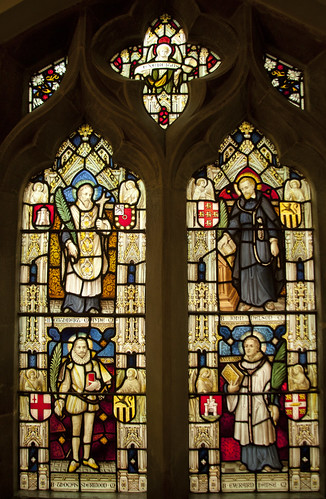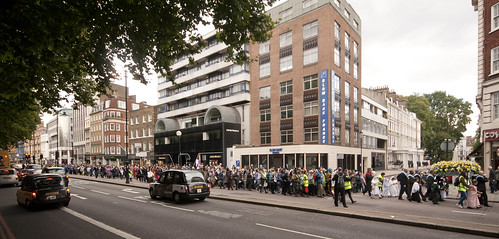Guide to the series: Historic Crimes: Repentance and Reparation
Part 1
Part 2
Part 3
----------------------------------------------------------
In my last two posts I wrote about what our response can and should be to crimes, not personal crimes we have committed but those of the past (and for that matter of the present) which have, as it were, defiled the Church. Here I want to say a little more about the form reparation can take in practice.
 |
Clockwise from top left: St Cuthbert Mayne, Bl John Nelson SJ,
who forgave the Queen as he was disembowelled, Bl Everard Hanse,
|
And bubbling from her breast, it doth divideThe idea here is that she did have some measure of guilt for what had occurred, and her death is a kind of expiation. It makes most sense, at least to a Christian reader, on Clare Asquith's reading: that Lucrece represents the English community, which in part remained faithful and in part apostatised under pressure from the Protestant Revolt. The shedding of the blood of the martyrs, which Shakespeare's description of Lucrece's suicide suggests, was a kind of expiation of the apostasy. The faithfulness of few, a faithfulness to death, in this way made up for the faithlessness of others. It makes the reconciliation of the whole country, the 'late-sacked island', more possible.
In two slow rivers, that the crimson blood
Circles her body in on every side,
Who, like a late-sack'd island, vastly stood
Bare and unpeopled in this fearful flood.
Some of her blood still pure and red remain'd,
And some look'd black, and that false Tarquin stain'd.
For the most part the English martyrs had no personal, guilty involvement with the despoliation of the Church and the persecution of the Faithful, but they offered their lives all the same for the salvation of all: for the guilty as for the innocent. Thus wrote St Edmund Campion to the Anglican establishment:
And touching our Society, be it known to you that we have made a league—all the Jesuits in the world, whose succession and multitude must overreach all the practice of England—cheerfully to carry the cross you shall lay upon us, and never to despair your recovery, while we have a man left to enjoy your Tyburn, or to be racked with your torments, or consumed with your prisons. The expense is reckoned, the enterprise is begun; it is of God; it cannot be withstood. So the faith was planted: So it must be restored.
 | ||||
| Clockwise from top left: St Luke Kirby, B Robert Johnson, St Alexander Briant, B John Shert. Priests tortured (most of them at least) and then executed under Elizabeth Tudor. |
Apart from the incidental sufferings of being a faithful Catholic in modern Britain, there are things which the Church enjoins upon us by way of reparation. Most familiar, perhaps, are the Divine Praises, which are said, as many hand-missals will explain, as 'Reparation for Profane Language'. In the same spirit, the Forty Hours Devotion was established as an act of reparation for the excesses of Carnival time.
Canons 1211 of the 1983 (current) Code of Canon law tells us:
Sacred places are violated by gravely injurious actions done in them with scandal to the faithful, actions which, in the judgment of the local ordinary, are so grave and contrary to the holiness of the place that it is not permitted to carry on worship in them until the damage is repaired by a penitential rite according to the norm of the liturgical books.
This is is an extreme and highly specific application of the general principle which I have been discussing. It is noteworthy that it is the local Bishop has has responsibility for these cases.
More generally, the Tyburn Walk is done in a spirit of penance. We walked silently, without banners, in accordance with the long-standing tradition of the Guild of Our Lady of Ransom.
One of the innovations of the LMS Pilgrim's Handbook this year is the inclusion of the Seven Penitential Psalms, a devotion almost completely forgotten even by Traditional Catholics: and we did in fact sing some of them. The walking pilgrimages, to Walsingham, to Chartres, and others in Australia, Russia and America, are a wonderful opportunity for reparation.
In none of these cases does a penitential spirit mean a gloomy one: we perform these works of reparation with joy, like Juliet in Measure for Measure. The discomforts, inconvenience and - on the long walking pilgrimages, the pain - become positive when they are offered up in this spirit. At the same time, they don't stop being pains.
Coming up on Saturday 11th October is an event which is perhaps unique today as being specifically advertised as an act of reparation: The Rosary Crusade of Reparation. It is one of the biggest public events in the Catholic year in London. About 2000 participants walk from Westminster Cathedral to the Brompton Oratory. The reparation is specifically for abortion. There ought to be an event like this every month in every diocese: but in the absence of that, do come along to this one.
The procession is led by a statue of Our Lady of Fatima, and we are reminded of the message of Fatima.
Penance! Penance! Penance! Pray to God for sinners.
Support the work of the LMS by becoming an 'Anniversary Supporter'.
More generally, the Tyburn Walk is done in a spirit of penance. We walked silently, without banners, in accordance with the long-standing tradition of the Guild of Our Lady of Ransom.
One of the innovations of the LMS Pilgrim's Handbook this year is the inclusion of the Seven Penitential Psalms, a devotion almost completely forgotten even by Traditional Catholics: and we did in fact sing some of them. The walking pilgrimages, to Walsingham, to Chartres, and others in Australia, Russia and America, are a wonderful opportunity for reparation.
In none of these cases does a penitential spirit mean a gloomy one: we perform these works of reparation with joy, like Juliet in Measure for Measure. The discomforts, inconvenience and - on the long walking pilgrimages, the pain - become positive when they are offered up in this spirit. At the same time, they don't stop being pains.
 |
| Rosary Crusade of Reparation, 2014, about to start. |
The procession is led by a statue of Our Lady of Fatima, and we are reminded of the message of Fatima.
Penance! Penance! Penance! Pray to God for sinners.
 |
| Rosary Crusade in Knightsbridge. |
No comments:
Post a Comment